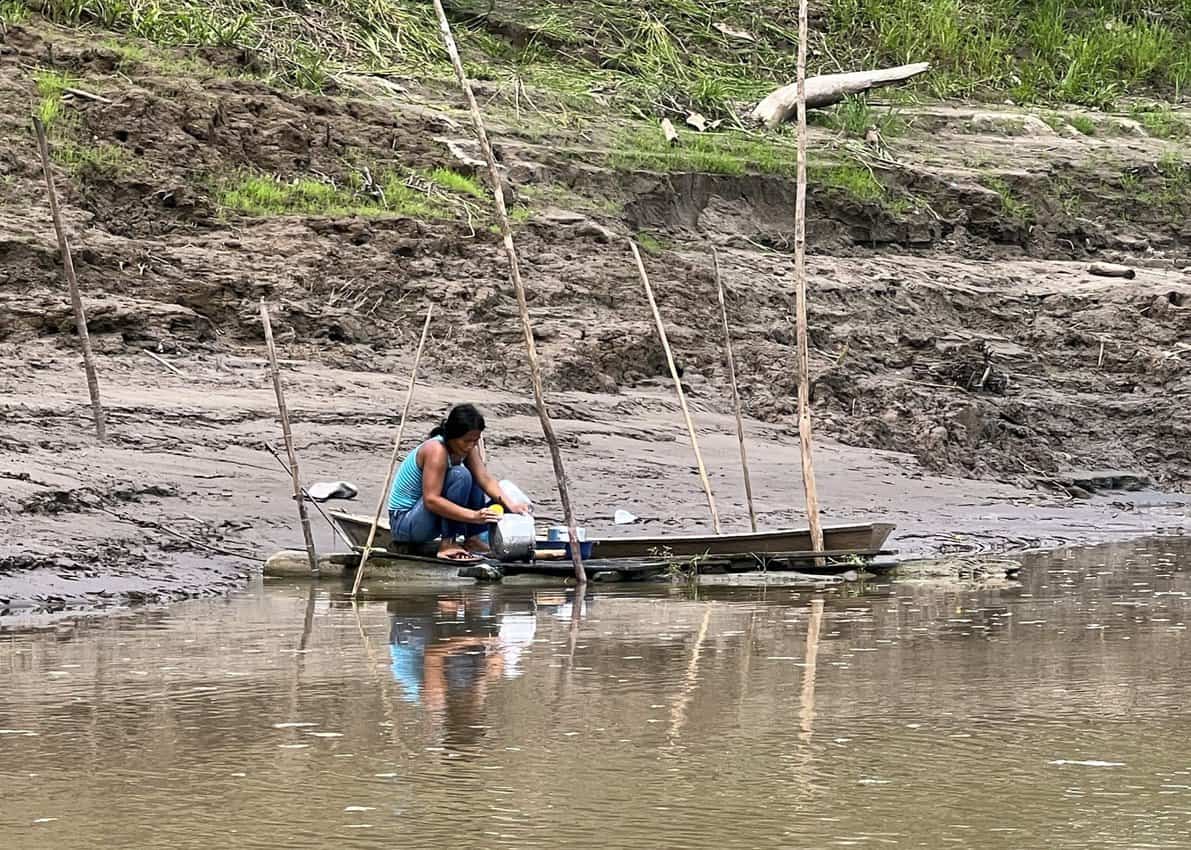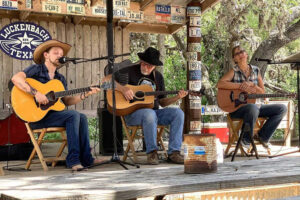
Discovering Two Worlds in St. Augustine, Florida
By Katherine Rodeghier

Gazing through the ocean mist from a quiet beach in Northeast Florida, I imagined Juan Ponce de Leon’s Spanish galleon sailing a league offshore.
From the deck, he raised his spyglass and gazed back. He had spotted land and was searching for a place to come ashore.
A day later he found it a few miles down the coast, calling his discovery “La Florida.”
That landing spot south of where I stood became the city of St. Augustine, the oldest permanent European settlement in the U.S.
Ponce de Leon had his foot in two worlds, the old and the new when he claimed Florida for Spain in 1513.
I had a similar experience. In St. Augustine, I roamed a 144-square-block district dripping with history and Spanish moss, but just north of where Ponce de Leon first spied land I discovered a thoroughly modern resort area.
Ponte Vedra Beach is chock-full of playful pursuits: tennis, spas, beaches, and golf on a championship course that’s the stuff of legend.
Five centuries to explore
With more than 60 historic sites, St. Augustine could have kept me wrapped in the past for weeks. I chose to begin with a stroll down St. George Street, a pedestrian-only thoroughfare through the heart of the historic district.

Together with its side streets, it brought to mind a sanitized version of New Orleans’ French Quarter. Spanish colonial buildings housed boutiques, ice cream parlors, galleries, souvenir stores, restaurants, and churches.

I popped into the Cathedral Basilica, the oldest Christian congregation in the contiguous U.S. and a National Historic Landmark. Founded as a mission church in 1565, it burned several times, including a torching by Sir Francis Drake.
The current structure blends neoclassical and Spanish mission architecture. Inside, I gawked at its striking red ceiling, stained glass windows, and murals depicting the history of the church and the city.
My legs would have given out long before I’d walked to even a fraction of St. Augustine’s historic sites, so I boarded the hop-on-hop-off Old Town Trolley and saved my strength for exploring the old fort.
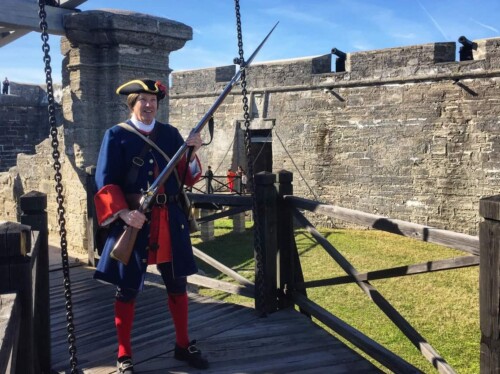
Spain ordered the building of Castillo de San Marcos to protect its treasure fleets from pirates and its rival, Great Britain.
The oldest masonry fort on the U.S. mainland, its first stones were laid in 1672. Diamond-shaped bastions jut from walls made of local coquina stone as much as 19 feet thick.
The U.S. National Park Service oversees the fort. Exhibits, films, and performances by costumed interpreters tell tales of siege, war and revolution as the fort passed among Spain, Britain, and the U.S.
Of course, I’d heard of Ponce de Leon’s fountain of youth but had not put it together with St. Augustine until I toured Fountain of Youth Archeological Park on the site where the explorer came ashore in 1513. In 1565, St. Augustine was founded here at a Timucua Native American settlement.

The 15-acre park has a replica of a Timucua village, Spanish cannons, preening peacocks, and that famous fountain of natural spring water.
The myth the water could restore one’s youth was perpetuated by Spanish sailors who noted the longevity and vitality of the Timucuas.
In truth, the Indians were more youthful and healthier than the crew because they not only drank the water but ate only fresh fish, seafood, and produce.
The sailors, and most Europeans in the 16th century, had a poor diet and lived in cities with inadequate sanitation and polluted drinking water, shortening their lives.
I took a sip of the mineral-tasting water in the park’s springhouse, but much preferred the libations at St. Augustine Distillery.
Occupying a renovated ice-manufacturing plant dating from 1917, it offers free tours of the distilling process used to make its vodka, rum, gin, and whiskey.
I had generous pours of the day’s free cocktails: a Florida mule, rum tiki, and New World gin and tonic.
The right latitude
Leaving St. Augustine and its rich history behind, I drove 40 minutes north to Ponte Vedra Beach on Florida A1A.
The road skirting the Atlantic Ocean was fringed with vacation homes, beaches and the GTM National Estuarine Research Reserve encompassing a coastline linked to a noteworthy latitude.
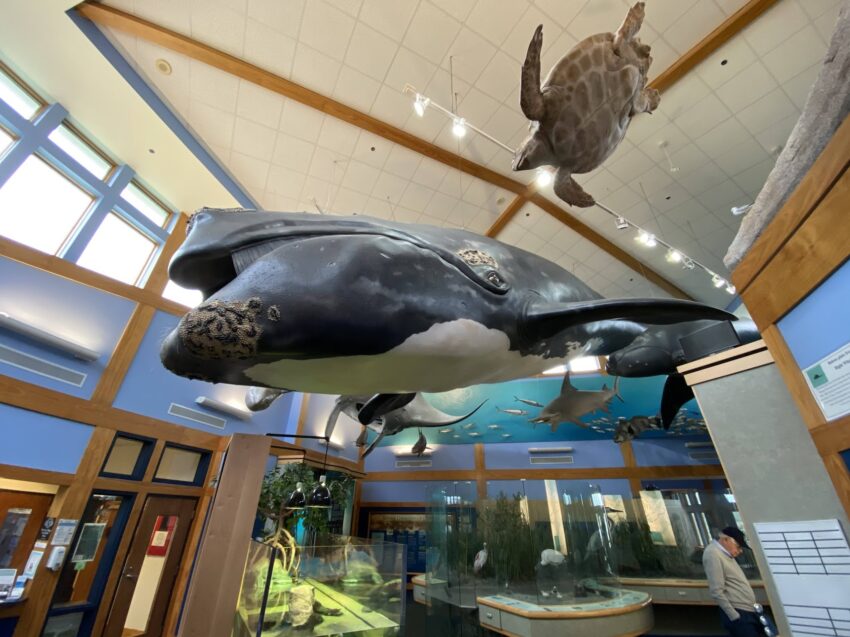
The only surviving navigational logbook of Ponce de Leon’s first voyage states that just offshore, at 30 degrees, 8 minutes north, the explorer spotted land. It was noon on April 2, 1513, and on the following day, Florida became part of Spain.
No Spanish galleons ride the waves these days, but beach-goers here between December and March might catch a glimpse of migrating North Atlantic right whales making their migration.
Continuing north, the real estate became decidedly upscale: luxurious vacation homes, oceanfront mansions, swanky resorts. The Ponte Vedra Inn & Club has been pampering guests for more than 80 years.
Together with its sister property, The Lodge and Club a mile and a half down the beach, guests find plenty to occupy their leisure time: golf on two 18-hole courses, the largest spa in North Florida, a tennis club on the ATP World Tour, and a broad beach with kayaks, stand-up paddleboards, and surfboards for rent.

Golf aficionados worship the sport at TPC Sawgrass. The first of many Tournament Players Clubs, it opened to the public in 1980 and remains the home of the PGA Tour headquarters. The Players Championship, with a $15 million purse—largest on the tour—draws thousands of fans to Ponte Vedra Beach in March.

Inside the Mediterranean Revival-style clubhouse, volunteer storytellers give anecdote-rich tours of its murals, memorabilia, and artifacts.
The late and gregarious Jack Larson retired from the Air Force and careers in broadcasting and real estate. I had the good fortune to be guided by the gregarious Jack Larson just a few months before he passed away.
He regaled me with stories about fairway feats by Tiger Woods and other golf greats, pointed out the President’s Cup trophy in its Plexiglas case, and walked me down a hall of fame and a display of clubs used by champion golfers, including one swung by Jack Nicklaus in the ’70s.
He spun a colorful tale about the PGA commissioner’s purchase of 415 acres of swamp and sawgrass for just $1 and his work to turn it into this golf complex worth millions.
My tour ended with a ride in a golf cart past three holes of the Pete Dye-designed Stadium Course, including its famous—some might say infamous—17th. This 137-yard par-3 signature hole ranks among golf’s most recognizable and most difficult because its “Island Green” is almost entirely ringed by water. Divers retrieve about 30,000 balls from its lagoon each year.

Culinary explorations
A girl’s gotta eat, right? Luckily, St. Augustine/Ponte Vedra region has become a foodie haven spiced by its mix of ethnic heritages accumulated during 500 years of history.
Take, for example, family-run Aunt Kate’s on the River. The owner’s ancestors were among many who came to Florida as indentured servants from the island of Menorca in Spain.
The menu includes Menorcan pilau, a rice dish made with meat and flavored with tomatoes, onion, and the fiery datil pepper, which is famous in St. Augustine.
The old Florida restaurant on the Intracoastal Tolomato River also serves local seafood, steaks, pasta, and salads along with home-cooked sides such as collard greens, cheese grits, and sweet potato fries.
What could be more appropriate in St. Augustine’s historic district than a Spanish restaurant?
Columbia Restaurant has a history all its own dating back to 1905 when the first establishment in the family-owned chain opened in Ybor City, the Cuban enclave in Tampa, Fla.
It remains Florida’s oldest restaurant and expanded to seven outlets in the state. The St. Augustine location occupies pride of place on St. George Street where diners congregate on a patio as they wait for tables in one of the dining rooms adorned with hand-painted tiles and Spanish-style fountains.
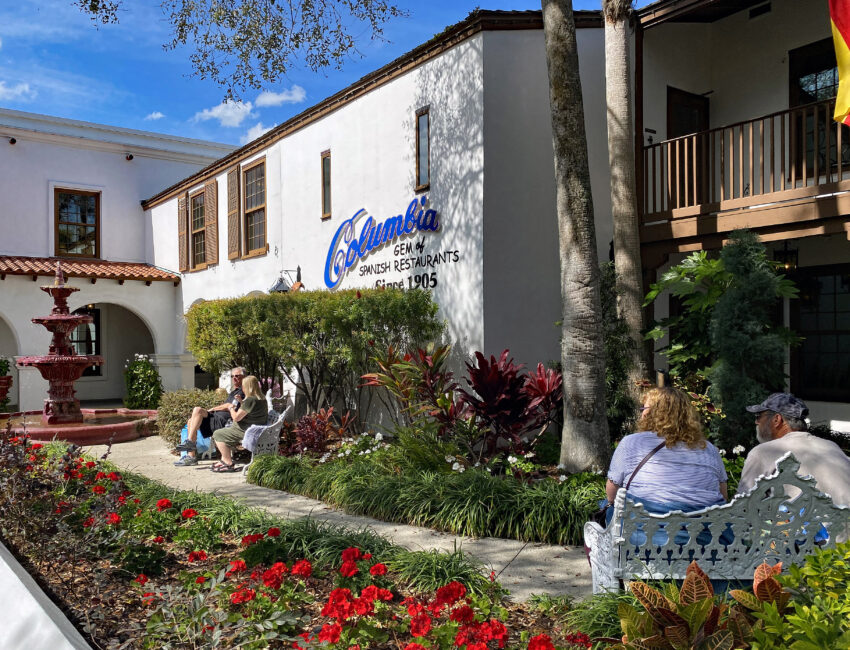
Dishes made from family recipes include paella “a la Valenciana,” roast pork “A la Cubana,” and Columbia’s original 1905 salad prepared tableside with its signature garlic dressing.
Chef-owned Michael’s opened in an 18th-century house in the historic district in 2006 and quickly won accolades for Chef Michael Lugo’s Latin-inspired cuisine and its stellar wine list.
The cozy 57-seat restaurant specializes in steaks dry-aged for 45 days and seasonal entrees created from the freshest local ingredients.
A standard starter, Michael’s Board, is an eye- and palate-pleasing assortment of cured Spanish meats and cheeses with seasonal accompaniments.
Even for those not into golf, the Clubhouse at TPC Sawgrass merits a stop just to dine at Nineteen especially if they can snag a seat on the 2,550-square-foot terrace overlooking the impossibly green presentation lawn and the 9th and 18th holes of the Stadium Course.
I heard competitive golfers crave the Superfood Bowl on the lunch menu so I had to try it. Its mix of crispy brown rice, kale pesto, poached egg, avocado, cauliflower, and cucumber seemed so healthy it made even a novice like me feel energized enough go out and swing a club.
St. Augustine, Ponte Vedra & The Beaches Visitors and Convention Bureau: 800-418-7529, floridashistoriccoast.com.
The author’s trip was sponsored by Visit Florida and St. Augustine, Ponte Vedra & The Beaches Visitors and Convention Bureau, but the opinions are her own.
 Katherine Rodeghier is an award-winning travel journalist. She began as the travel editor at the Chicago Daily Herald and continues as a freelance contributor to outlets including the Chicago Tribune, Los Angeles Times, Global Traveler magazine, Dallas Morning News, St. Louis Post-Dispatch, Cruise Travel magazine, several AAA regional magazines, and Cruise Critic. She lives in Western Springs IL.
Katherine Rodeghier is an award-winning travel journalist. She began as the travel editor at the Chicago Daily Herald and continues as a freelance contributor to outlets including the Chicago Tribune, Los Angeles Times, Global Traveler magazine, Dallas Morning News, St. Louis Post-Dispatch, Cruise Travel magazine, several AAA regional magazines, and Cruise Critic. She lives in Western Springs IL.
- Saudi Arabia Might Be Your Next Getaway Spot - April 23, 2024
- Mongolia, the Land of Eternal Blue Sky - April 20, 2024
- These 9 U.S. National Parks Require Reservations in 2024 - April 17, 2024



